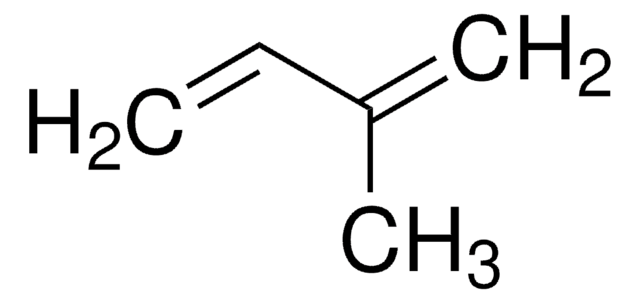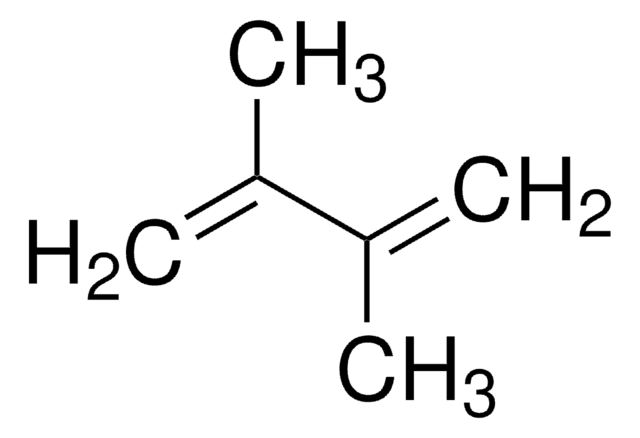I19551
Isopren
99%, contains <1000 ppm p-tert-butylcatechol as inhibitor
Synonym(e):
2-Methyl-1,3-butadien
About This Item
Empfohlene Produkte
Dampfdichte
2.35 (vs air)
Qualitätsniveau
Dampfdruck
8.82 psi ( 20 °C)
Assay
99%
Form
liquid
Selbstzündungstemp.
428 °F
Enthält
<1000 ppm p-tert-butylcatechol as inhibitor
Expl.-Gr.
10 %
Brechungsindex
n20/D 1.422 (lit.)
bp
34 °C (lit.)
mp (Schmelzpunkt)
−146 °C (lit.)
Dichte
0.681 g/mL at 25 °C (lit.)
Lagertemp.
2-8°C
SMILES String
CC(=C)C=C
InChI
1S/C5H8/c1-4-5(2)3/h4H,1-2H2,3H3
InChIKey
RRHGJUQNOFWUDK-UHFFFAOYSA-N
Suchen Sie nach ähnlichen Produkten? Aufrufen Leitfaden zum Produktvergleich
Anwendung
Verpackung
Signalwort
Danger
H-Sätze
Gefahreneinstufungen
Aquatic Chronic 3 - Carc. 1B - Flam. Liq. 1 - Muta. 2
Lagerklassenschlüssel
3 - Flammable liquids
WGK
WGK 3
Flammpunkt (°F)
-65.2 °F - closed cup
Flammpunkt (°C)
-54 °C - closed cup
Persönliche Schutzausrüstung
Eyeshields, Faceshields, Gloves
Hier finden Sie alle aktuellen Versionen:
Besitzen Sie dieses Produkt bereits?
In der Dokumentenbibliothek finden Sie die Dokumentation zu den Produkten, die Sie kürzlich erworben haben.
Kunden haben sich ebenfalls angesehen
Unser Team von Wissenschaftlern verfügt über Erfahrung in allen Forschungsbereichen einschließlich Life Science, Materialwissenschaften, chemischer Synthese, Chromatographie, Analytik und vielen mehr..
Setzen Sie sich mit dem technischen Dienst in Verbindung.










